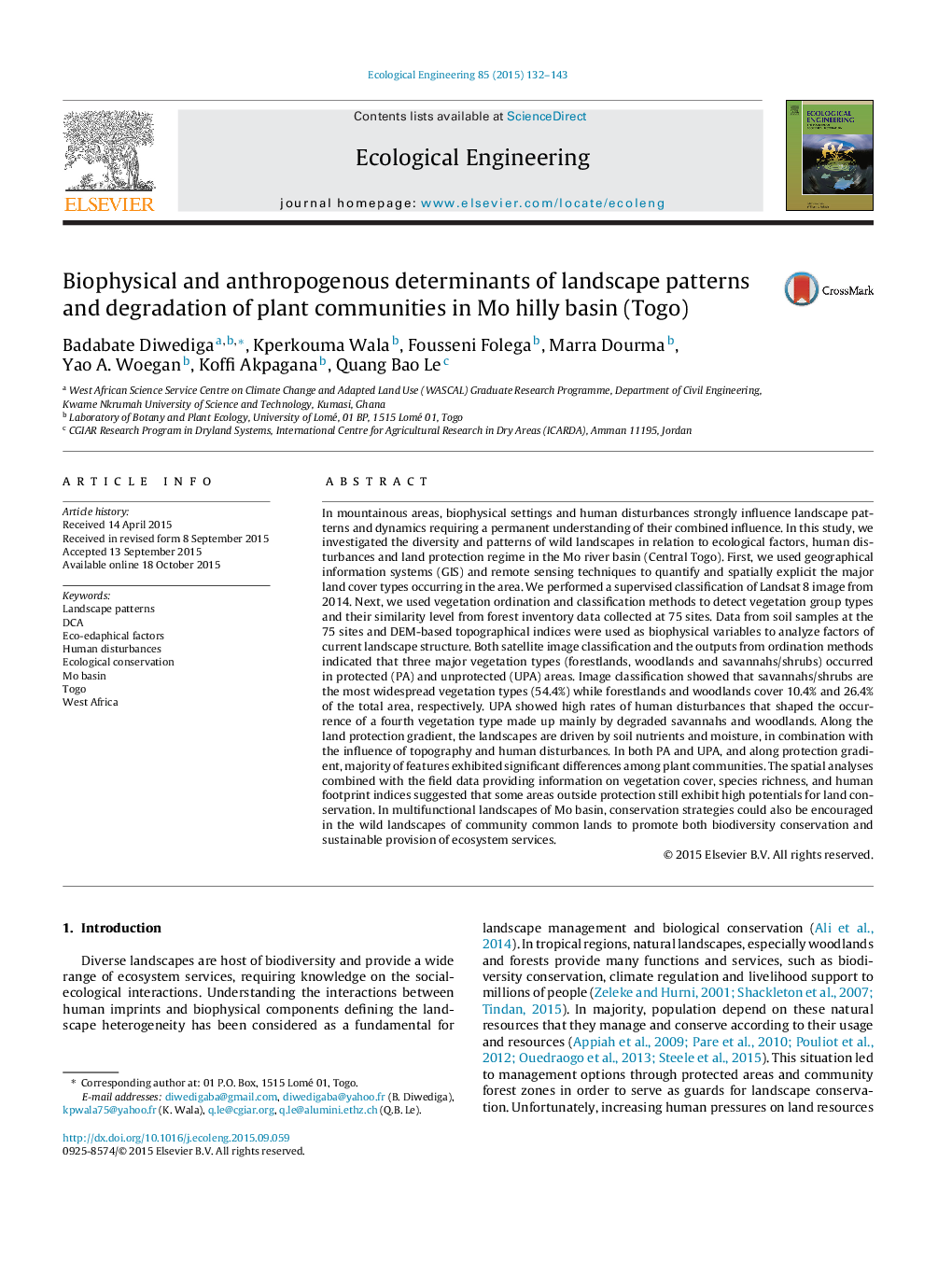| Article ID | Journal | Published Year | Pages | File Type |
|---|---|---|---|---|
| 6301596 | Ecological Engineering | 2015 | 12 Pages |
â¢We tested potential factors of landscape patterns in Mo river vegetation communities.â¢Human disturbances affected mostly open forests/woodlands on less submersible soils.â¢Tree sapling densities were higher in highly human-disturbed vegetation.â¢Lowlands and riverbanks are less disturbed and nutrient-richer in both PA and UPA.â¢On-going human disturbances may jeopardize landscape conservation in Mo basin.
In mountainous areas, biophysical settings and human disturbances strongly influence landscape patterns and dynamics requiring a permanent understanding of their combined influence. In this study, we investigated the diversity and patterns of wild landscapes in relation to ecological factors, human disturbances and land protection regime in the Mo river basin (Central Togo). First, we used geographical information systems (GIS) and remote sensing techniques to quantify and spatially explicit the major land cover types occurring in the area. We performed a supervised classification of Landsat 8 image from 2014. Next, we used vegetation ordination and classification methods to detect vegetation group types and their similarity level from forest inventory data collected at 75 sites. Data from soil samples at the 75 sites and DEM-based topographical indices were used as biophysical variables to analyze factors of current landscape structure. Both satellite image classification and the outputs from ordination methods indicated that three major vegetation types (forestlands, woodlands and savannahs/shrubs) occurred in protected (PA) and unprotected (UPA) areas. Image classification showed that savannahs/shrubs are the most widespread vegetation types (54.4%) while forestlands and woodlands cover 10.4% and 26.4% of the total area, respectively. UPA showed high rates of human disturbances that shaped the occurrence of a fourth vegetation type made up mainly by degraded savannahs and woodlands. Along the land protection gradient, the landscapes are driven by soil nutrients and moisture, in combination with the influence of topography and human disturbances. In both PA and UPA, and along protection gradient, majority of features exhibited significant differences among plant communities. The spatial analyses combined with the field data providing information on vegetation cover, species richness, and human footprint indices suggested that some areas outside protection still exhibit high potentials for land conservation. In multifunctional landscapes of Mo basin, conservation strategies could also be encouraged in the wild landscapes of community common lands to promote both biodiversity conservation and sustainable provision of ecosystem services.
